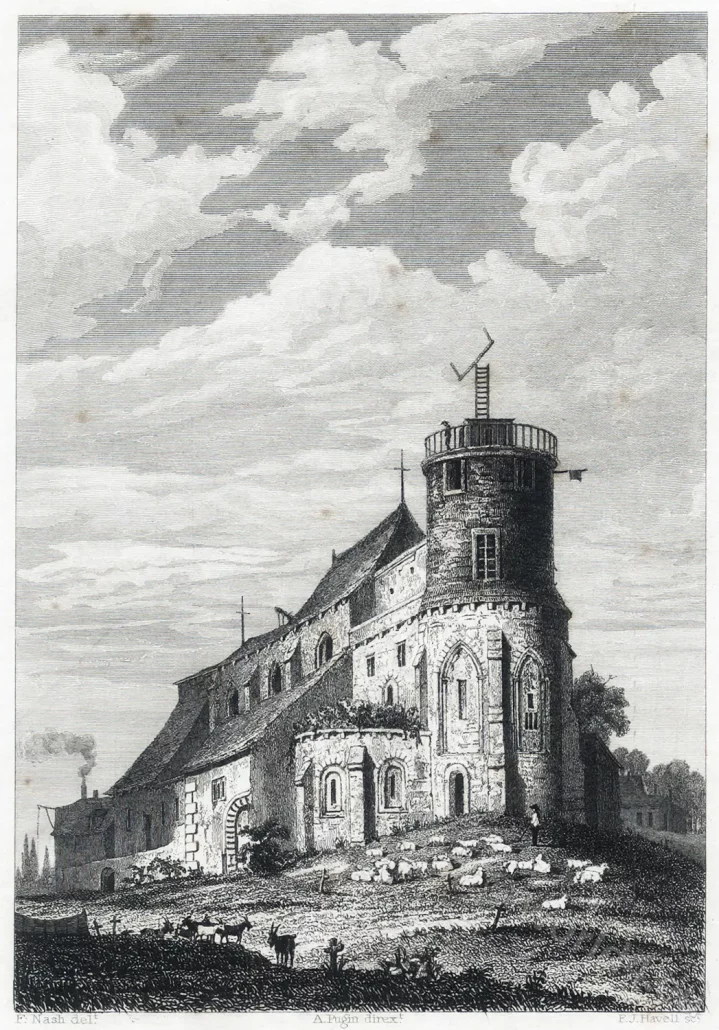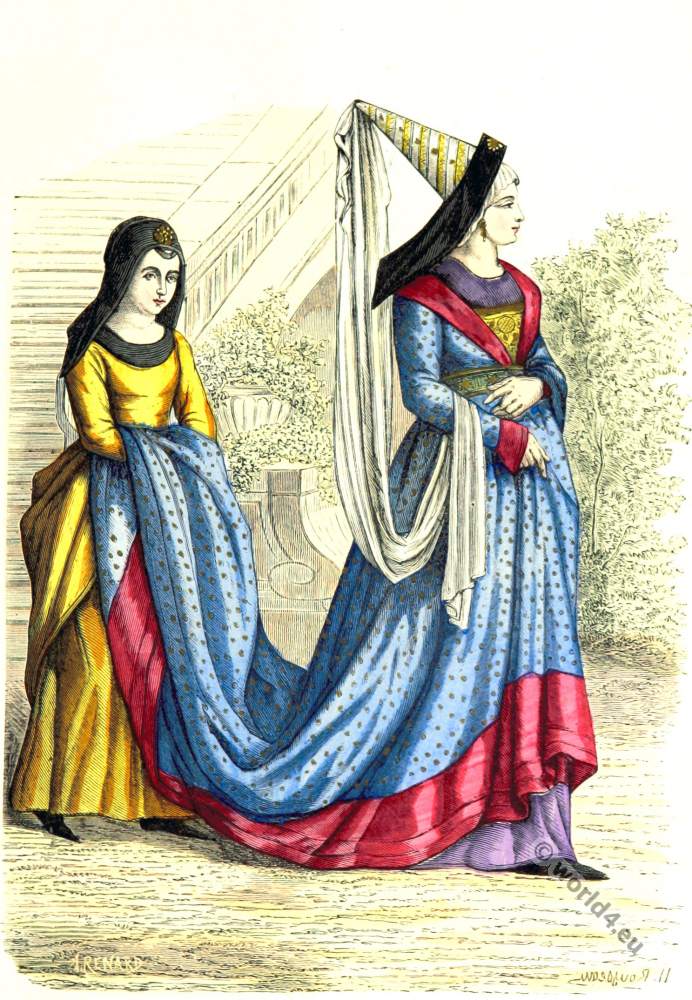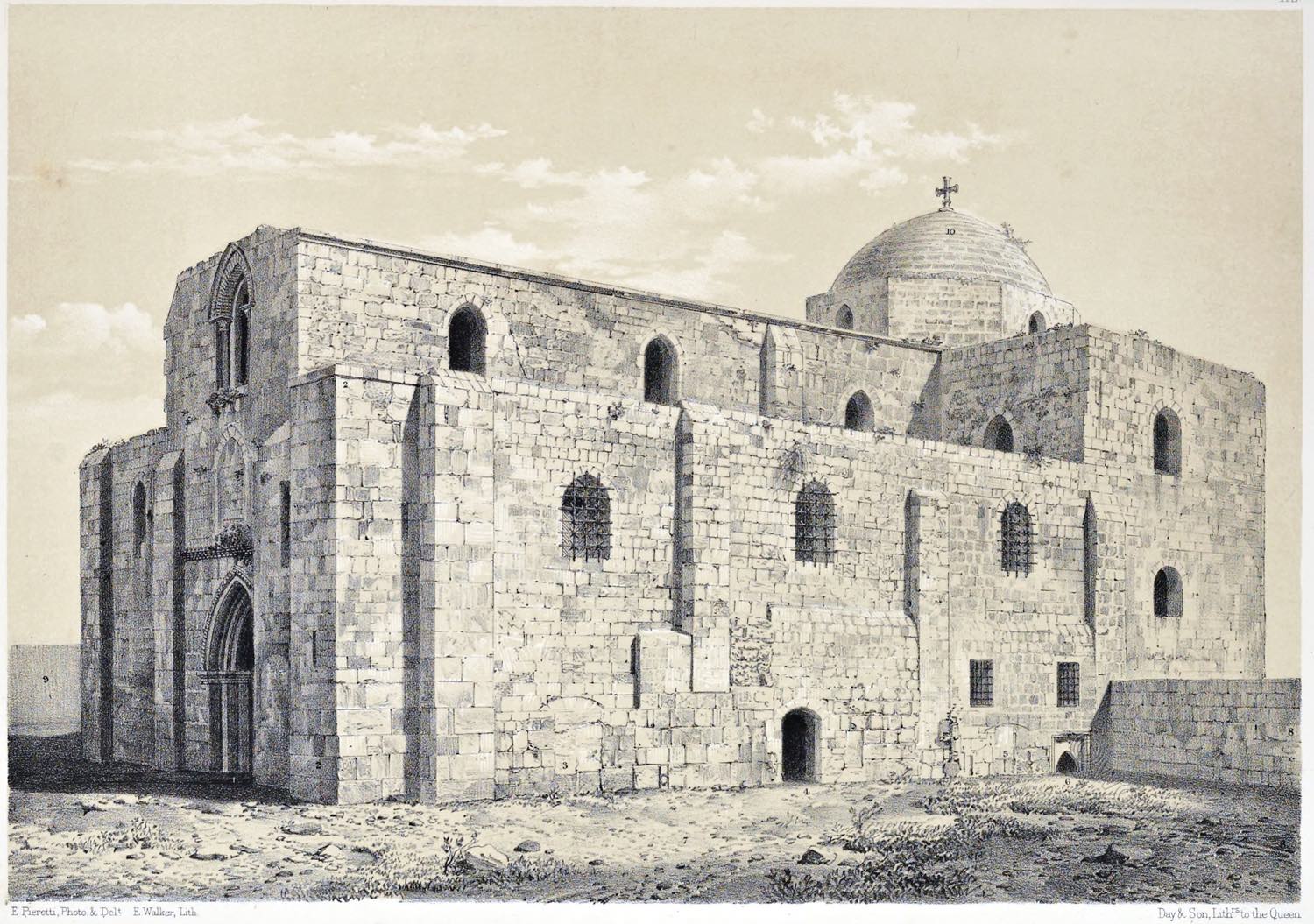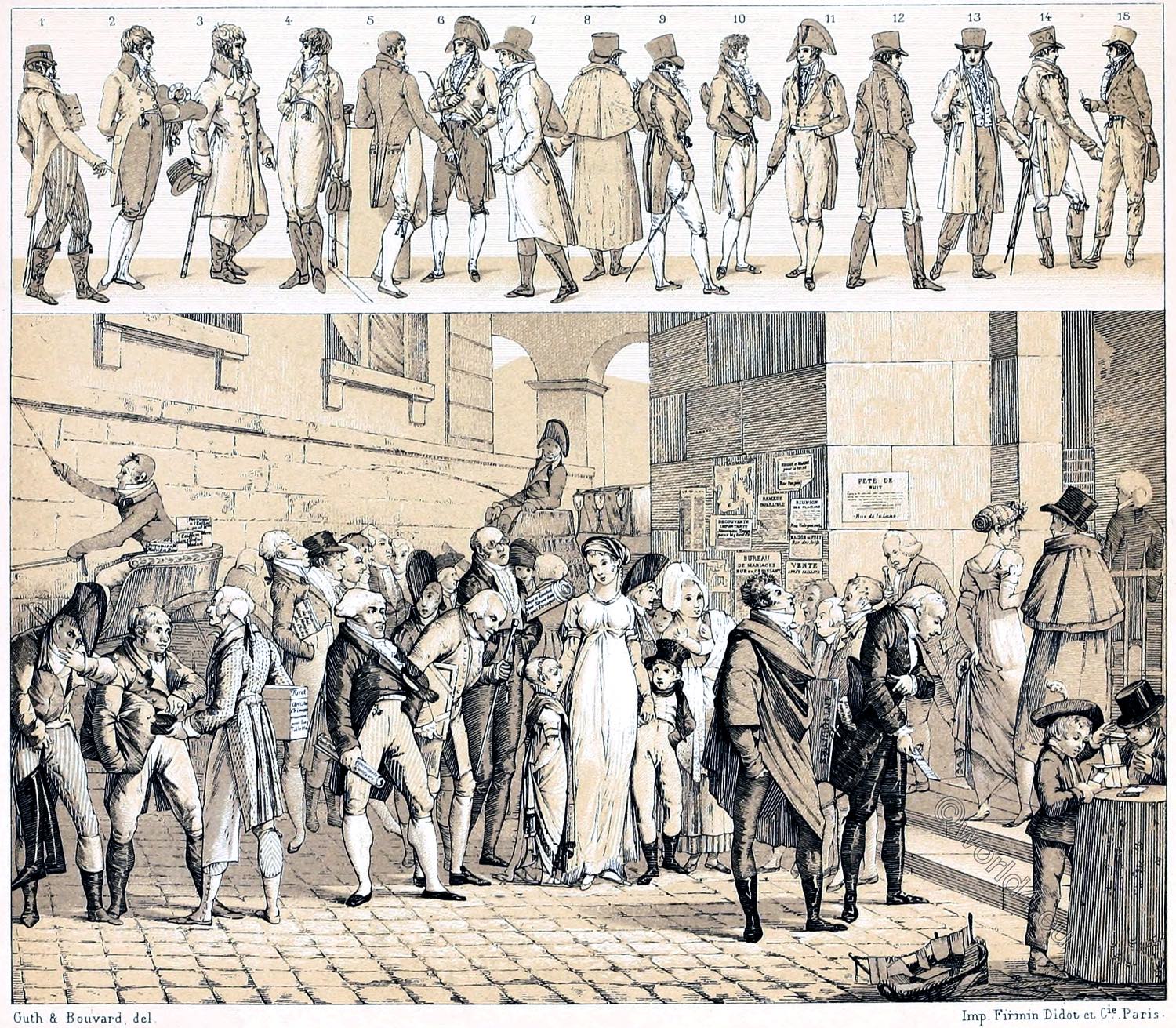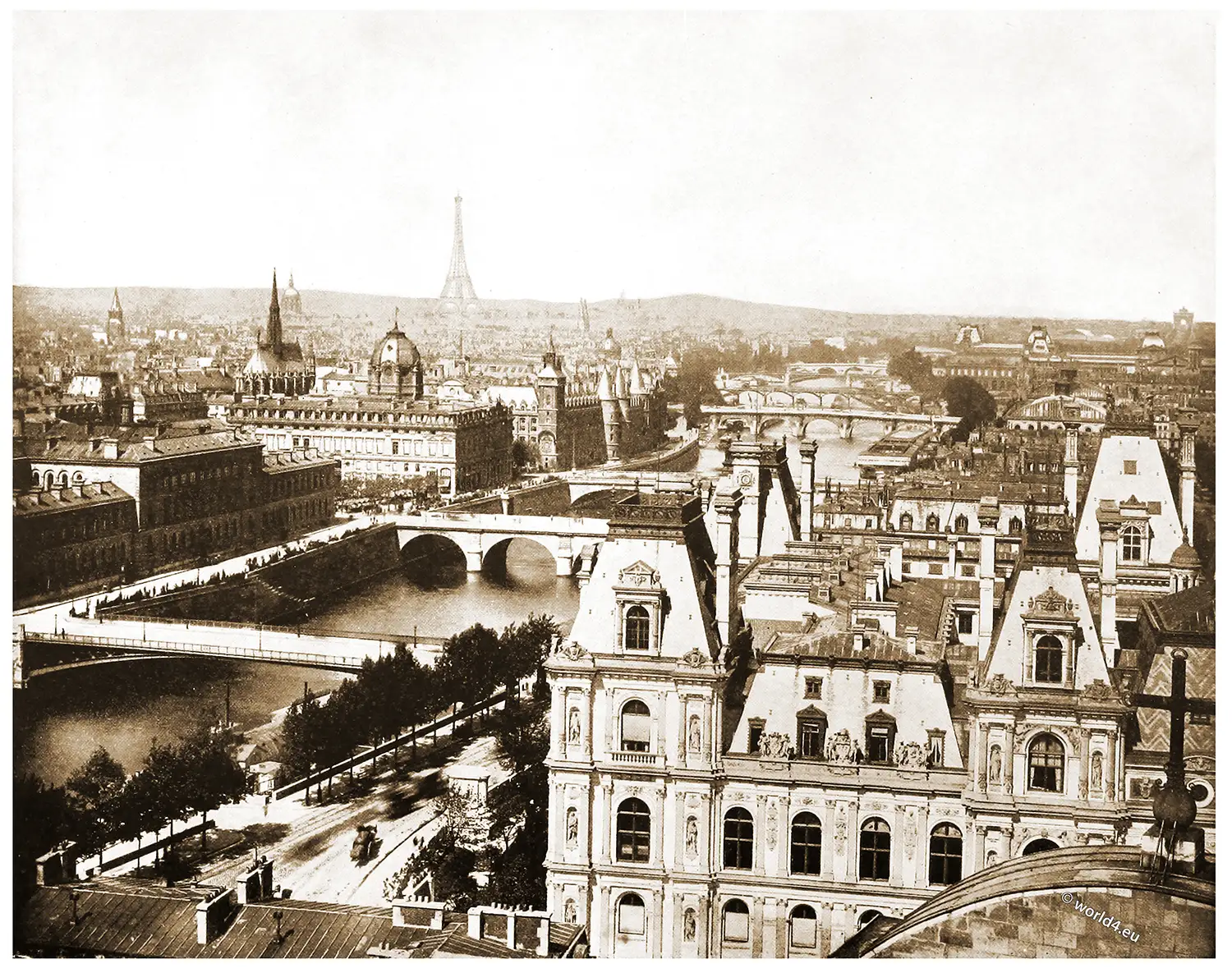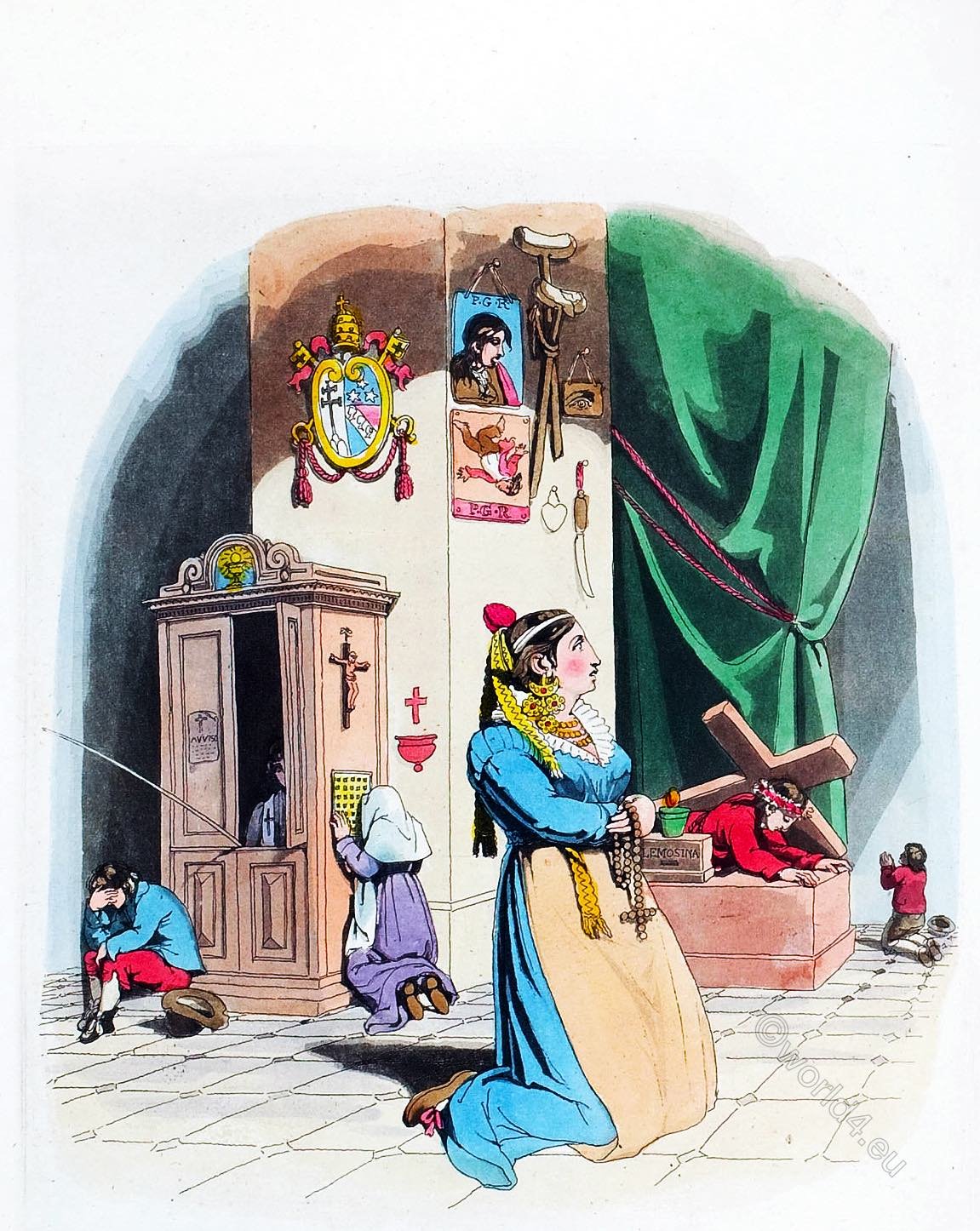CHURCH OF MONTMARTRE.
Several etymologies have been given as the source from which the celebrated hill of Montmartre, near Paris, derived its name. Some have called it Monsmartyrum, because it was there, it is said, that St. Denis and his companions received the crown of martyrdom; but it is most probable that Montmartre owes its name to a temple of Mars which was formerly erected on it, and we find that in a poem written by a monk, in 896, on the siege of Paris, it is called Mons Martis. It is probable also that Montmartre was, as well as other high places near Paris, used by the ancients as a place of worship.
Montmartre has long been celebrated for the immense quantity of plaster which its quarries have furnished, as well as for the fossils it contains. In these quarries, shells and other marine productions have frequently been found, and on one occasion the trunk of a large palm-tree, petrified, was dug up from a considerable depth beneath the surface of the ground. In 1787 and 1738 searches were made, when on the declivity of the hill, to the north, were found the remains of an ancient building, as well as several antiquities, from which it is supposed that there existed formerly, at the foot of this mountain, country houses belonging to the Romans, or some ancient buildings, the origin and use of which can no longer be ascertained. It was near Montmartre that Charles-le-Gros (Charles III (839 – 888, also known as Charles the Fat) concluded a treaty of peace with the Normans, who besieged Paris in 886. At the foot of this hill, and on the south-west side, in a narrow and solitary valley, is situated what was formerly called Le Champ de Repos, a name which has since been changed for the less romantic one of Cimetière Montmartre.
Towards the end of the seventh, or at the commencement of the next century, a church existed on this hill, which was dedicated to St. Denis, and a small chapel, œdicula parva ecclesia, in which were kept the relics of several other martyrs whose, names have not reached us. In 1096 these two buildings were given, together with some lands attached to them, to the monks of Saint-Martin-des-Champs, who gave them, in 1133, to the king Louis-le-Gros, in exchange for Saint-Denis-de-la-Chartre: this prince and his wife, Alix de Savoie, founded there the Abbaye of the Benedictines. The convent then occupied the place where the chapel had stood but the nuns who since caused a proper building to be erected for their use, with a church attached to it, having no further occasion for the old edifice, gave it to the parish, to whose use it has since been appropriated. On an old tower, belonging to this edifice, a telegraph has been placed corresponding with that of Calais. From Montmartre may be enjoyed a most extensive and varied prospect, including the whole city of Paris.
Source: Paris and its environs, displayed in a series of two hundred picturesque views, from original drawings by Augustus Pugin (1762-1832); Augustus Welby Northmore Pugin (1812-1852); Charles Heath (1785-1848). London: Jennings and Chaplin, 1831.

